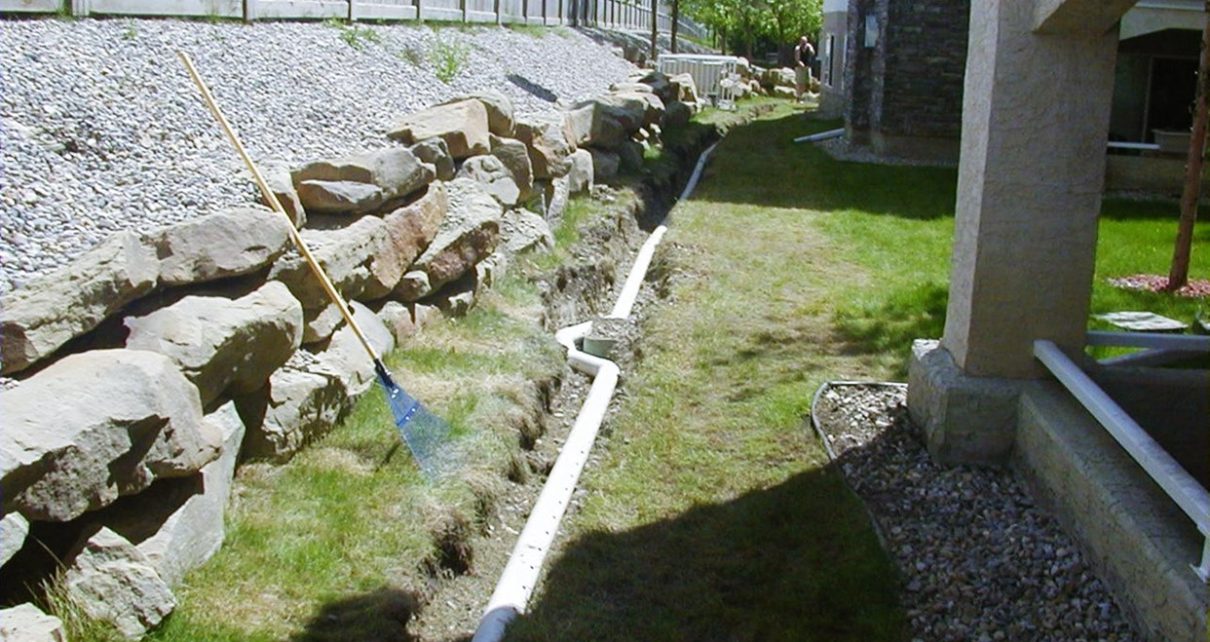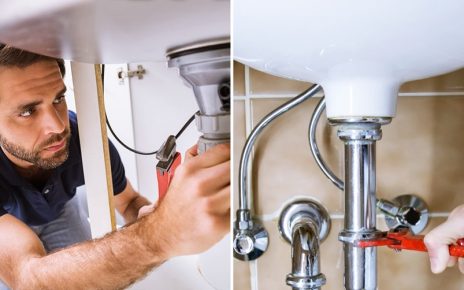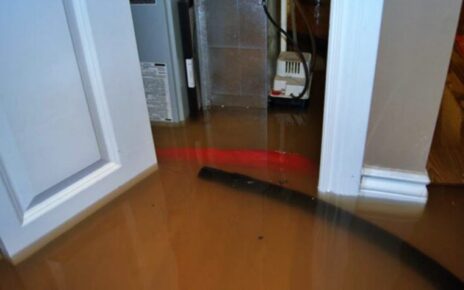When it comes to protecting your property from water-related damage, an essential component to consider is the curtain drain. This drainage system acts as a reliable defense against basement flooding, foundation damage, and surface water issues. In this article, we will explore the concept of curtain drains, their benefits, installation process, and maintenance requirements. Join us as we dive into the world of effective water management with curtain drains.
Table of Contents
What is a Curtain Drain?
An underground drainage system called a curtain drain, often referred to as a perimeter drain or a French drain, is made to move water away from a particular location. It consists of a trench filled with gravel or aggregate and a perforated drainage pipe that captures and diverts excess water. The primary purpose of a curtain drain is to alleviate water accumulation, prevent water damage, and maintain the structural integrity of a building.
How Does a Curtain Drain Work?
A curtain drain operates on a simple yet effective principle. It functions by creating a barrier between the water source and the desired area, intercepting and redirecting the water to a safe discharge point. The perforated drainage pipe in the trench allows water to enter the system, while the gravel or aggregate surrounding the pipe facilitates water flow and filtration. By providing a path of least resistance, the curtain drain effectively manages water runoff and prevents it from seeping into unwanted areas.
Benefits of Installing a Curtain Drain
Installing a curtain drain offers several advantages in terms of water management and property protection. Let’s explore the key benefits:
- Preventing Basement Flooding: One of the primary benefits of a curtain drain is its ability to prevent water from infiltrating basements or lower levels of a building. By intercepting and diverting groundwater, it significantly reduces the risk of basement flooding and associated damage.
- Protecting Foundation Walls: Excessive water around the foundation can cause soil erosion and compromise the stability of the structure. A curtain drain acts as a barrier, effectively protecting foundation walls from water pressure and potential damage.
- Managing Surface Water: If your property is prone to surface water accumulation after heavy rainfall, a curtain drain can be a valuable solution. It efficiently captures and redirects surface water, preventing it from pooling around your property and causing water-related issues.
Installation Process of a Curtain Drain
The successful installation of a curtain drain involves several important steps. Here’s an overview of the process:
- Site Assessment and Design: A thorough evaluation of the property is conducted to determine the areas most susceptible to water accumulation. This assessment guides the design and placement of the curtain drain.
- Excavation and Trench Preparation: The designated area for the curtain drain is excavated, and a trench is prepared to accommodate the drainage pipe and gravel bed. The trench dimensions are determined based on the specific requirements of the project.
- Installation of Drainage Pipe and Gravel: A perforated drainage pipe is laid at the bottom of the trench, ensuring proper alignment and slope for effective water flow. The trench is then filled with gravel or aggregate material, which acts as a filter and facilitates water drainage.
- Backfilling and Restoration: Once the drainage pipe and gravel bed are in place, the trench is backfilled with soil, ensuring proper compaction. The surface is restored to its original condition, with minimal visible evidence of the curtain drain.
Maintenance and Upkeep of Curtain Drains
To ensure the optimal functionality of a curtain drain, regular maintenance and upkeep are necessary. Consider the following tips:
- Regular Inspection: Periodically inspect the curtain drain to identify any signs of damage, blockages, or erosion. Early detection allows for timely repairs and prevents potential issues.
- Clearing Debris and Blockages: Remove any debris, leaves, or sediment that may accumulate in the curtain drain. This ensures unobstructed water flow and prevents clogs.
- Addressing Soil Erosion: Monitor the soil around the curtain drain for signs of erosion. If erosion occurs, take steps to stabilize the soil and prevent further damage to the drain system.
Common Issues with Curtain Drains
While curtain drains are effective drainage solutions, they can encounter certain issues. Here are some common problems to be aware of:
- Clogging and Drainage Problems: Over time, curtain drains may become clogged with debris or sediment, hindering proper water flow. Regular maintenance and cleaning can minimize this issue.
- Inadequate Slope or Design: Improper slope or design can compromise the effectiveness of a curtain drain. It is crucial to ensure the correct slope for water flow and a well-designed system based on the specific needs of the property.
- Root Intrusion: Tree roots can infiltrate curtain drains, causing blockages and damage. Planting trees at a safe distance from the drain or installing root barriers can help prevent this issue.
Curtain Drain vs. Other Drainage Systems
While curtain drains are highly effective, it’s important to understand how they compare to other drainage systems. Let’s briefly examine two common alternatives:
French Drains: French drains are similar to curtain drains in their purpose and function. Both systems involve trenches filled with gravel and perforated pipes. The key difference lies in the placement and purpose. Curtain drains are typically installed around the perimeter of a property, while French drains are used to redirect water away from specific areas, such as building foundations.
Sump Pumps: Sump pumps are mechanical devices that remove water from basements or low-lying areas. While sump pumps are effective at eliminating accumulated water, they do not prevent water infiltration like curtain drains. In certain cases, a combination of curtain drains and sump pumps may be necessary for comprehensive water management.
Curtain Drain Conclusion
In summary, a well-designed and properly installed curtain drain can be a game-changer in effectively managing water and protecting your property. By preventing basement flooding, safeguarding foundation walls, and managing surface water, curtain drains provide a reliable defense against water-related damage. Remember to perform regular maintenance, address any issues promptly, and consult with professionals to ensure the optimal performance of your curtain drain system.
Curtain Drain FAQs
Is it possible to put a curtain drain around an existing structure?
Curtain drains can be built around existing structures. To negotiate potential difficulties and assure successful installation, however, meticulous planning and professional knowledge are essential.
What is the lifespan of a curtain drain?
A curtain drain can last for decades if properly installed and maintained, providing long-term protection against water damage.
Is it possible to install a curtain drain yourself?
While some homeowners may be able to install a curtain drain on their own, it is best to contact with a professional for accurate design and proper installation to ensure maximum effectiveness.
Are curtain drains appropriate for all types of soil?
Various soil types can benefit from curtain drains. However, some soil characteristics, such dense clay or compacted soil, could call for additional steps to improve drainage effectiveness.
Can a curtain drain accommodate a lot of water during a downpour?
Yes, curtain drains are made to handle large amounts of water. To efficiently manage extreme weather, it’s crucial to ensure optimum sizing and regular maintenance.




